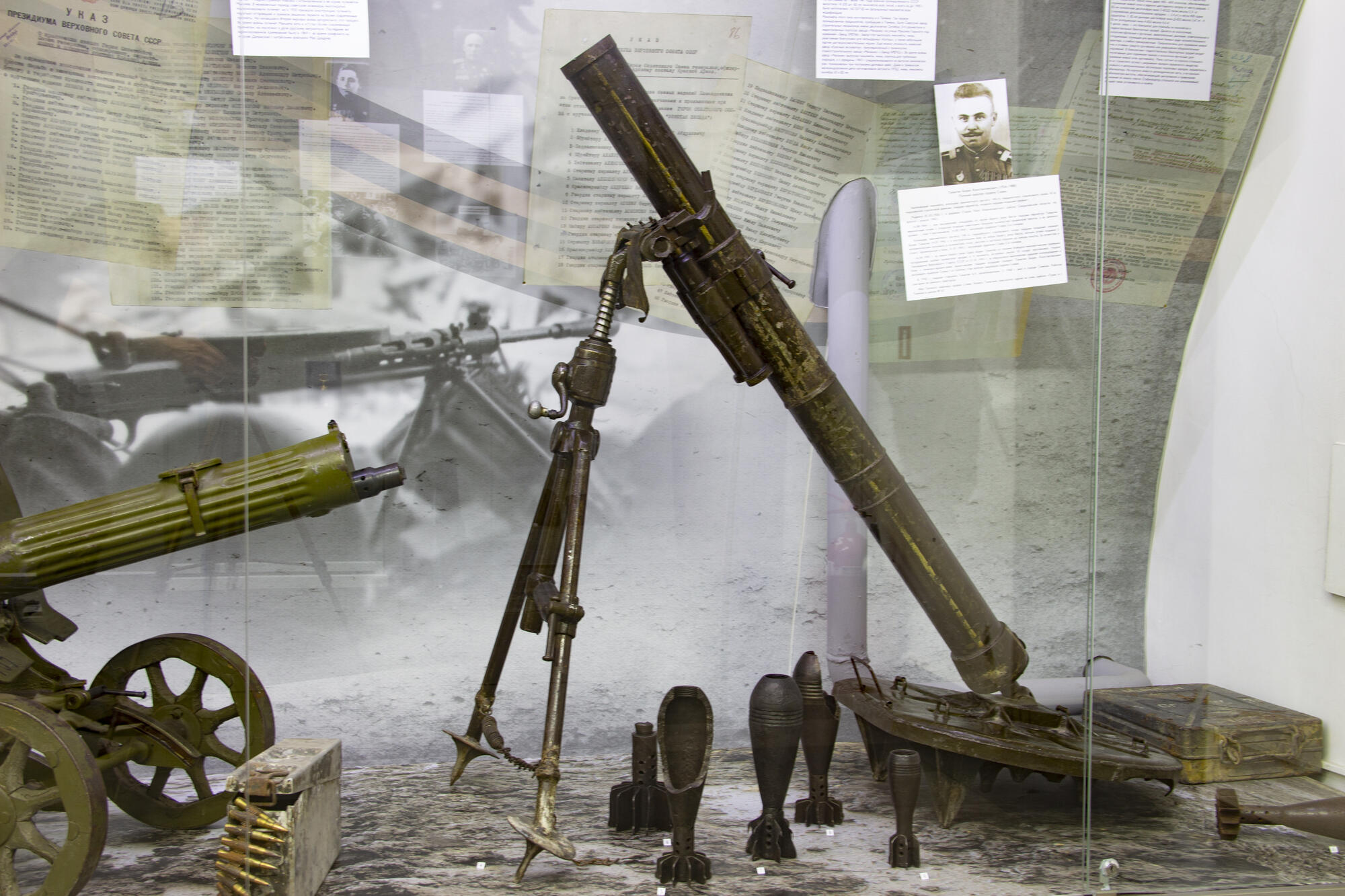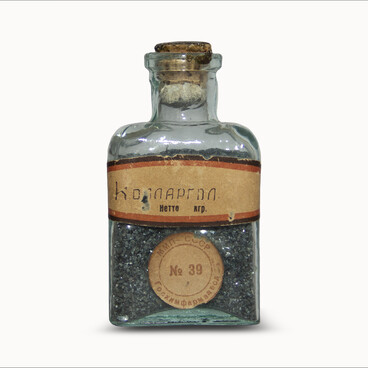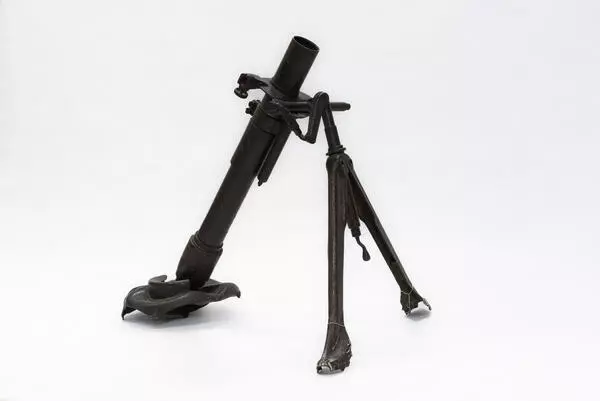During the conflict on the Chinese Eastern Railway in 1929, the Soviet troops captured 81 mm Stokes-Brandt mortars. The Soviet military authorities decided to produce their own weapons based on those mortars. This task was assigned to the Leningrad Gas Dynamics Laboratory, more specifically, to a group headed by Nikolay Alexandrovich Dorovlyov.
The designers managed to develop the required mortar and also introduced a number of improvements. The main one was that the caliber was increased to 82 mm. Dorovlyov justified the choice of a non-standard caliber by the fact that the Soviet 82 mm mortars would be able to fire the captured ammunition of foreign troops, whilst not permitting the enemy the same advantage.
In 2000, the Russian weapons historian Alexander Borisovich Shirokorad suggested that this could be explained by the fear that ammunition would become wedged in the mortar tube, or by the need to simplify production.
Engineers continued to work on improving the design. At Leningrad Special Design Bureau No. 4, Boris Ivanovich Shavyrin developed an improved version of the mortar — the BM-37. While the original design was preserved, almost all elements of the mortar were modified to meet the requirements of mass production.
Both mortars had the same main tactical and technical characteristics, but the new version had a different base plate. The new mortar weighed 56 kg — almost 8 kg less, and the height of the striker was decreased from 26 to 8 mm. The shock absorber had a longer stroke.
The Shavyrin mortar was easier to produce and more convenient for the crew. After the completion of the tests, on February 26, 1939, the Defense Committee ordered to put the new mortar into service under the name “82 mm battalion mortar of the 1937 model” (the BM-37).
Mortars of this type were also manufactured in Tyumen. There, they were assembled by the workers of the Odessa Plant of Construction Machinery Named After the 10th Anniversary of the October Revolution — the first industrial enterprise evacuated to Tyumen during the war. The plant produced not only mortars but also bombs, warheads for the legendary Katyusha rocket launchers, as well as small batches of mortar mixing plants.
The designers managed to develop the required mortar and also introduced a number of improvements. The main one was that the caliber was increased to 82 mm. Dorovlyov justified the choice of a non-standard caliber by the fact that the Soviet 82 mm mortars would be able to fire the captured ammunition of foreign troops, whilst not permitting the enemy the same advantage.
In 2000, the Russian weapons historian Alexander Borisovich Shirokorad suggested that this could be explained by the fear that ammunition would become wedged in the mortar tube, or by the need to simplify production.
Engineers continued to work on improving the design. At Leningrad Special Design Bureau No. 4, Boris Ivanovich Shavyrin developed an improved version of the mortar — the BM-37. While the original design was preserved, almost all elements of the mortar were modified to meet the requirements of mass production.
Both mortars had the same main tactical and technical characteristics, but the new version had a different base plate. The new mortar weighed 56 kg — almost 8 kg less, and the height of the striker was decreased from 26 to 8 mm. The shock absorber had a longer stroke.
The Shavyrin mortar was easier to produce and more convenient for the crew. After the completion of the tests, on February 26, 1939, the Defense Committee ordered to put the new mortar into service under the name “82 mm battalion mortar of the 1937 model” (the BM-37).
Mortars of this type were also manufactured in Tyumen. There, they were assembled by the workers of the Odessa Plant of Construction Machinery Named After the 10th Anniversary of the October Revolution — the first industrial enterprise evacuated to Tyumen during the war. The plant produced not only mortars but also bombs, warheads for the legendary Katyusha rocket launchers, as well as small batches of mortar mixing plants.




